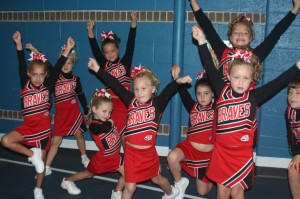For the last month or so, I’ve been busy putting together a studio dedicated to mixing. This has cost quite a bit of time spent researching, buying, and configuring gear, and more time spent building and installing acoustic treatments and figuring out ergonomics. And yeah, it cost a bunch of money too. I’m still not done, but it’s up and running and music is being mixed!
It’s all been pretty fun and exciting, even with the stress and exhaustion that comes with a big project. I’ve been sharing my progress with friends as I go, and in general their response tends to be “cool! can’t wait to see it.” One friend in particular, however, had a slightly different response. The conversation went something like this. Me: “I’ve been super busy, spending a bunch of time and money building a mix room!” Friend: “Why?”
Everything started spinning. “Because…analog summing…Vintage King…” I stammered, spilling some hot coffee in my lap. “Stereo imaging?” I choked out, my voice cracking into a whisper. Finally I regained my composure, engaged in some childish name calling and hung up on him.
Having settled his hash, I decided to give the question some further thought. The question came from someone who understands music production, and knows what mixing is. So, his point was this: “You’ve got some pretty nice gear, and your music sounds good–what gives?”
I understand this perspective very well. I’ve had a lot of gear over the years, and quite a few different setups for producing and mixing. Over time, I’ve tended to pursue the gear and solutions I find the most practical. In other words, instead of chasing the sometimes abstract notion of “quality,” focus on workflow. Workflow is important because speed is important. Whether tracking, programming, or mixing, slowdowns can cause ideas to be lost, inspiration to falter, and can open the doors to all sorts of neuroses and worrying.

BE DECISIVE! BE! BE! DECISIVE!
I embraced the philosophy that it’s best to choose gear that’s fun to work with, and isn’t insanely expensive. Don’t upgrade too much, or too often–it only slows you down. Better to spend your energy learning to use the stuff you’ve got.
The trick with this philosophy is recognizing when you’ve hit a genuine limitation. In my case, I came to the realization that there were some aspects of the mix I wasn’t hearing properly. Sometimes, when panning or EQing certain sounds, I would feel like I was guessing. In the end, I got the mixes to work and translate well, but there was some trial-and-error involved.
Also, for the last few years, part of my income has come from working as a mixer-for-hire. This work has ranged from doing post-production mixing for television commercials, to mixing entire albums for producers and songwriters. Overall, I’ve been getting pretty good results and making my clients happy. When mixing as a job speed is also important, but in a time-is-money fashion. I decided that an investment in reducing guesswork could easily pay for itself.
“My favorite trite audio Internet argument regarding gear is this notion that a good carpenter never blames his tool. Yeah, well, a good carpenter doesn’t buy a hammer made of plastic, either.”
– Mixerman, Zen And The Art Of Mixing
It’s funny: when the time comes to let go of some of those plastic hammers, you may discover just how attached to them you are. Not only is your toy hammer familiar, you can develop a perverse pride in working with it. “Hey pal, you like that credenza I made you? I built it with a plastic hammer! You’re welcome.” Don’t get me wrong, I have nothing against plastic hammers as a matter of principle. Sometimes, it’s important to keep using that tool that makes you weird and difficult. But sometimes it’s not.
The point is often made that great music can be made with very simple, very inexpensive tools, and there’s no doubt that this is true. It’s also true that there’s no one standard of fidelity, or “sound” that works for all music. In other words, for certain projects, a cassette four-track recorder may be sound incredible, but that doesn’t mean it’s right for everything. High-precision tools typically offer greater flexibility than basic tools.
Ultimately, I’m not counting on the new mixing room to be “better” in an absolute sense, but rather to offer increased speed and flexibility. Don’t get me wrong, I absolutely intend to keep getting better as a mixer and to get great results. And I also believe that the new setup will lead to better results–there’s no question in my mind that increased speed equals increased quality. But can I say for sure right now that an increase in quality will happen as a result of Bass Trap X, or D/A converter Y? Can I say with certainty that these improvements wouldn’t happen either way by becoming better at using a my existing setup?
Nope. Only time will tell, and even then I’ll be making a series of highly subjective evaluations. So to answer the big question, “Why?” it’s first and foremost to do the same work I’m already doing, but faster. Beyond that, it’s going to be an adventure and a learning experience. I’m writing this series so I can bring you along as a traveling companion. Please join me! It can get lonely in there.
NEXT UP: CHOOSING THE GEAR (ROUND ONE)






